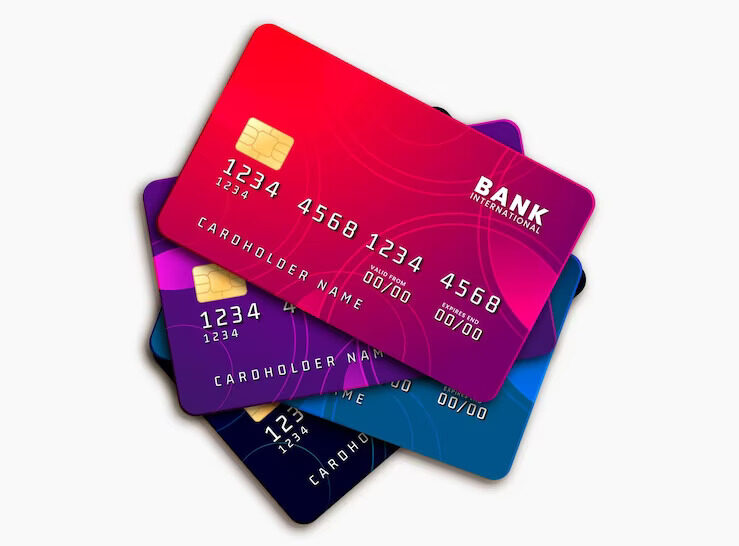How To Find the Beste Fordeler Med Kredittkort
Many premium credit card choices are available to applicants, but deciding as to which is most suitable is difficult. With varied benefits often countered by annual fees, weighing the advantages against the downsides is essential.
Learn examples of common credit card benefit programs at https://www.investopedia.com/ask/answers/110614/what-are-some-examples-common-credit-card-reward-program-benefits.asp.
Before looking at the perks, it’s essential to look at the eligibility criteria to ensure you qualify and to help find the ideal card.
Tips On Searching for the Most Suitable Credit Card
With the numerous credit card choices, applicants find it daunting to decide on the best one for their lifestyle and needs. The premium cards typically have outstanding benefits but usually have annual fees.
Before selecting a card, you need to weigh the fees and charges against the benefits to see if the benefits are worth paying the fee.
As an applicant, you’ll first need to qualify for the credit cards that offer these sorts of benefits. Go to kredittkortinfo.no/fordeler-kredittkort/ for details on the best benefits you can get with cards. Here are steps to follow to find one of these.
An excellent credit score
The premium choices require a good to excellent score, which you’ll want to check along with your profile. There are options for those with less-than-favorable or limited and no history.
Regardless of having excellent credit and a broad selection of choices for credit cards, your score will drop temporarily with each application, and the hard pull will remain on your profile for roughly two years. With these hard pulls in a short timeframe, getting credit approval will be difficult during those two years.
Checking your credit is free before you start your card search. If your score isn’t where you need it to be, make some improvements before formally applying.
The benefits

What do you need from a credit card? What should it do for you? You can be more selective after you know which you qualify for.
Improving score or credit-building
When using any card responsibly, your score will improve. In fact, some issuers offer options specifically for individuals with no or limited profiles or less-than-favorable scores to build or improve their profile. Issuers make these fairly simple to qualify for.
Among these, applicants should find credit-building choices with chances to “upgrade to a better card down the road, free access to FICO scores, and reviews for limit increasing – industry-standard features.”
There are a few card choices meant to build scores and improve profiles. The primary among these include secured, unsecured, and student cards.
- Secured: These work comparably to a traditional credit card but have a distinct difference in that the applicant must put a security deposit on the account when signing on. This acts as the credit limit and will be refunded when the card is closed or if you upgrade to an unsecured possibility.
- Unsecured: An unsecured choice doesn’t require a security deposit but a good to excellent score to get approval. That can mean more of a challenge to get the card.
- Student: The student cards are meant to assist students in building credit since many college-age young adults have minimal to no profile. It’s relatively easy to qualify for this choice, but these come with lower limits and a higher interest. They could also have rewards and benefits like cash back not found with other credit-building options.
Transferring balances
If you have high-interest credit card debt, the perfect way to eliminate this is by transferring the debt from those cards or even just one of them to a balance transfer card. This choice offers applicants roughly 18 months of 0 percent APR to work on paying off the debt.
Before transferring balances, it’s vital to work on a budget plan to make sure you can pay back the balance within the designated introductory period. After that promotion ends, the rate will go to a standard APR, with some cards taking that rate back to the date the card was initially activated.
These cards are an excellent option if you plan correctly and have the ability to pay off the debt promptly. Some of these offer as long as 21-24 months at 0 percent APR, the best benefit you can get.
Low-interest card
This is a good choice for those who need to finance a large purchase or substantial expense over an extended period with the least interest. Two primary forms are available, including the low ongoing rate, which is less than the average APR, or a 0 percent APR introductory card for new purchases.
The no-interest card for new purchases is the most valuable benefit, particularly if you are moving into a new place, remodeling, or making home improvements. You can make purchases and pay them off before interest kicks in.
Typically, that won’t happen for roughly 18 months, but some cards offer a little longer than that. The balance will need to be paid before that time comes to avoid standard interest with a balance being carried over.
If you don’t think you can manage within a time limit, the ongoing low APR with variable rates usually starts at approximately 17 percent. That might seem high, but nowadays, the average APR is over 20 percent. The credit score must be good to excellent for an ongoing low APR application approval.
The rewards card
Rewards are the benefits most people strive for when looking for credit cards. The best rewards come with premium cards for which issuers expect a good or excellent credit score.
The premise of these cards is that they will be used extensively for specific purposes for which the cardholder will then achieve their benefits, whether it be miles, points, cash back, bonuses, and on. There are a few reward cards to choose from.
- Cash back: A percentage of the spending is earned to be redeemed as cash for either a statement credit or direct depositing.
- Points: Comparable to cash, only points are accumulated based on spending, which you can turn in for travel, cash, or merchandise.
- Miles: Airline miles build up based on spending that can be redeemed for flying. These cards typically have stipulations that you go through their “travel portal” or go with a specific brand.
The rewards will vary from one card to the next, as does the amount earned with spending. The premium cash-back flat-rate cards can boast “at least two percent returned each time you spend.” Others will earn “as much as 5 percent + for bonuses and 1 percent for other categories.”
When comparing cash-back options, first review your spending behavior. If you’re on the go constantly with work and a hectic life pace, gas, and restaurants are likely bigger expenses. A card that offers higher cash back in these categories would make sense. A cash-back flat rate is a straightforward choice for some.
Those choosing cards that supply miles or points for flights to travel, whether for holidays, business trips, or visits to loved ones, will want cards that give the most rewards in categories where you’ll spend the most money, i.e., 3X rewards per dollar spent. With more straightforward cards, the reward would likely be 1 or 1.5X the dollar.
The value
Aside from the card type, you should choose a card with benefits relevant to your lifestyle and needs. What are some perks you might find advantageous? Check these out.
With secured and student cards
- Limit increases: With a secured card, find options that will offer periodic limit increases for financially responsible behavior.
- Graduate: Most people who obtain a secured credit card aim to gradually build their credit and get an offer for an unsecured card. Many issuers will automatically transition when credit improves without needing an application process.
Low interest and 0 interest APR
- 0 percent APR duration: The 0 percent interest is not an indefinite offer, but it is possible to find some cards that extend the introductory rate to 21 or 24 months.
- Penalties: Some cardholders fall behind on monthly payments, resulting in late fees or penalties. You can find options without these fees if you are concerned about being able to make your monthly bill.
Rewards
- Reward types: Credit cards have many reward types, like cash back, points, and miles. The most straightforward of these is cash back, but there is likely more value for the money when redeeming points.
- Low spending: Some reward cards set eligibility criteria based on spending amount, requiring a set limit before receiving special offers or bonuses. If you want the sign-on bonus for a card- compare the spending limits before committing to ensure you get the greatest value for the money.
- Annual fee: Reward cards offer the greatest benefits, but these premium cards often also come with annual fees. Typically, the rewards outweigh the cost of the fee, but you can find cards that don’t have a fee with great rewards.
Final Thought
The benefits of credit cards can look different from one person to the next. What you view as a benefit may not necessarily seem advantageous to someone else. The premium cards offer a plethora of different perks for their cardholders, whether lounge access at airlines, free baggage check, or fraud protection.
With the volume of cards available, finding the one to fit your lifestyle and meet all your needs can be difficult. Researching and comparing are priorities before committing. This will help to figure out where the greatest value is for the money. When you find it, the decision will be much easier.

















